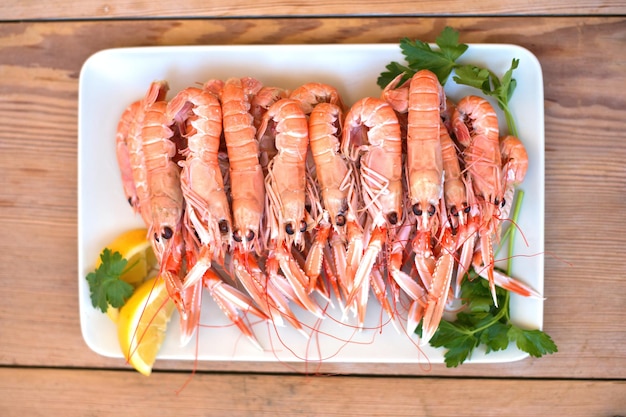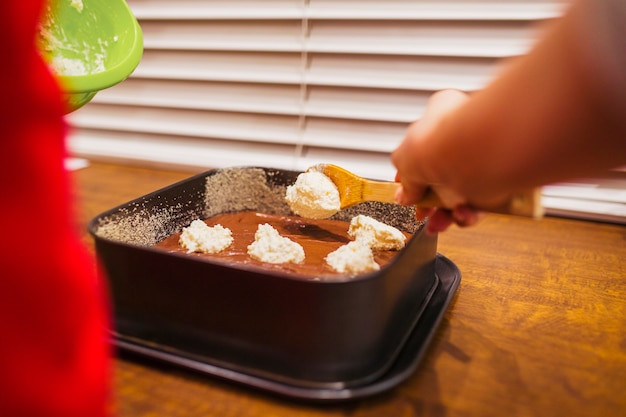Ah, persimmons! Those glorious orbs of autumnal goodness, with their vibrant orange hues and melt-in-your-mouth sweetness. Just the sight of them makes me feel all warm and fuzzy inside, like a childhood memory of crisp autumn air and the smell of cinnamon and cloves wafting from the kitchen. You see, persimmons hold a special place in my heart, and I'm here to share my love for this incredible fruit with you. We're going to explore the world of persimmon recipes, uncovering delectable ways to cook and enjoy this unique fall treasure.
Part 1: A Taste of the Persimmon

Persimmon Varieties: A World of Flavors
Let's start with the basics. Did you know that there are over a hundred varieties of persimmons? Each one has its unique characteristics, from the shape and size to the texture and flavor. My personal favorite is the Hachiya persimmon, known for its vibrant orange color, sweet, almost caramel-like flavor, and lusciously soft texture when fully ripe. It's like a creamy custard in your mouth! But don't let the soft texture fool you, Hachiya persimmons are best enjoyed when fully ripe, as they can be quite astringent (dry and puckering) when underripe.
However, there are other varieties that are just as delightful. For example, the Fuyu persimmon, with its firmer texture and slightly tart flavor, is perfect for snacking or using in salads. Imagine the sweet and tangy notes adding a burst of flavor to your greens. And then there's the Sharon fruit, a hybrid variety with a crisp texture and a sweet, slightly tangy taste. It's a great option for those who prefer a firmer texture or want to add a bit of a tart kick to their dishes.
The wonderful thing about persimmons is that there's a variety for every taste! Whether you prefer a soft, melting texture or a crisp, juicy bite, there's a persimmon out there for you.
Persimmon Season: When to Find These Jewels
Persimmons are a seasonal fruit, typically available from late summer to early winter. This makes them a true treat, a reminder of the changing seasons and the bounty of nature. I always feel a surge of excitement when I spot those vibrant orange orbs at the market, knowing that it's time to indulge in all things persimmon! It's like a little taste of autumn magic.
Selecting the Perfect Persimmon: Picking Tips
Choosing the right persimmons is crucial for a truly delicious experience. Here's what to look for:
- Color: Look for persimmons with a deep, rich orange color, indicating ripeness. Avoid those with any green spots, as they might not be ripe yet.
- Texture: Give the persimmon a gentle squeeze. It should feel slightly soft to the touch, but not mushy. If it's too firm, it's not ripe enough. And if it's too soft, it might be overripe. You want that perfect balance of yielding softness.
- Aroma: Ripe persimmons have a sweet, fragrant aroma. If you can smell a slight tanginess, it's probably past its prime. Think of it like a subtle hint of honey and caramel.
Remember, a perfectly ripe persimmon will have a slightly soft texture, a deep orange color, and a sweet, fragrant aroma. It's like a little treasure hunt, searching for that perfect persimmon!
Storing Persimmons: Keeping Them Fresh
Once you've got your hands on those perfect persimmons, it's essential to store them properly to keep them fresh and delicious. Here are a few tips:
- Room Temperature: If you want to eat them within a few days, leave them at room temperature. They'll ripen faster this way. Just make sure to keep an eye on them, as they can ripen quite quickly.
- Refrigerator: For longer storage, keep them in the refrigerator. They can last for up to a week, but they might not ripen as much. Refrigeration is your friend for those persimmons you want to enjoy later.
Remember, persimmons are a delicate fruit, so handle them with care. Avoid pressing them too hard, as this can damage the fruit. It's best to gently caress them as if they were precious gems.
Part 2: Persimmon Basics: Getting to Know This Fruit

The Science of Persimmons: A Bit of Botany
Have you ever wondered what makes persimmons so unique? They're not just a fruit; they're a botanical marvel. They belong to the genus Diospyros, which translates to "divine fruit" in Greek! And they're technically berries, but with a twist. Unlike most berries, persimmons have a multi-seeded, fleshy fruit. Their unique texture and flavor come from their high pectin content, which gives them that jelly-like consistency when ripe.
Think of persimmons as a little bit of magic in nature. They're a fascinating fruit, with a story to tell, a history to explore, and a taste that's truly unforgettable.
Nutritional Benefits of Persimmons: A Healthy Treat
Beyond their delightful taste, persimmons are also packed with nutrients, making them a healthy addition to your diet. They're a good source of:
- Vitamin C: Helps boost your immune system and protect your cells from damage. It's like a natural defense mechanism for your body.
- Fiber: Promotes digestive health and keeps you feeling full. A natural way to feel good inside and out.
- Antioxidants: Helps fight free radicals and protect your body from diseases. A natural shield against those harmful intruders.
- Potassium: Helps regulate blood pressure and muscle function. A natural way to keep your body in balance.
So not only are persimmons delicious, but they're also good for you! It's a win-win situation.
Persimmon: A Fruit With Many Uses
Persimmons are incredibly versatile. They can be enjoyed fresh, baked into delicious desserts, incorporated into savory dishes, and even used as a healthy alternative to sugar in jams and sauces. Their sweet, tangy flavor blends beautifully with various ingredients, creating endless possibilities for culinary creativity. The possibilities are truly endless!
Part 3: Persimmon Recipes: Sweet Indulgences

Persimmon Pudding: A Classic comfort food
Let's start with a recipe that embodies the essence of fall. Persimmon pudding is a classic comfort food, warm, sweet, and deeply satisfying. It's simple to make, but oh-so-delicious. The perfect combination of spices like cinnamon, nutmeg, and ginger brings out the richness of the persimmon. Imagine the warm spices mingling with the sweet and tangy notes of the persimmon. It's a symphony of flavors!
I love serving it warm with a dollop of whipped cream or a scoop of vanilla ice cream. It's a recipe that evokes memories of cozy evenings by the fireplace, the scent of baking spices filling the air. It's the perfect dessert for a chilly autumn evening.
Persimmon Cookies: A Chewy Delight
If you're looking for a more portable treat, persimmon cookies are a delightful option. These chewy cookies are packed with persimmon flavor and have a soft, gooey center. The sweetness of the persimmon is perfectly balanced by the chewy texture of the cookie. It's a delightful combination!
I like to add a bit of chocolate chips for an extra touch of indulgence. They're perfect for snacking, sharing, or even gifting to friends and family. A little bit of persimmon love to share.
Persimmon Pie: A Fruity Symphony
Persimmon pie is a true celebration of the season. The sweet, juicy filling is encased in a flaky crust, creating a harmonious blend of textures and flavors. The contrast between the flaky crust and the soft, sweet filling is truly delightful. Imagine the flaky crust, the sweet and tangy filling, and the warm spices coming together in a beautiful symphony of taste.
The pie is best served warm, allowing the flavors to mingle and create a symphony of taste. It's a recipe that's sure to impress, whether you're hosting a thanksgiving dinner or just enjoying a quiet evening at home. It's a perfect pie for any occasion.
Persimmon Smoothies: A Refreshing Start
For a quick and healthy start to your day, try a persimmon smoothie. The fruit's natural sweetness blends beautifully with other ingredients, like yogurt, milk, and spices. It's a refreshing and nutritious way to enjoy the benefits of persimmons, and it's perfect for those busy mornings when you need a quick and easy breakfast. Imagine the sweet and tangy notes of the persimmon combined with the creamy texture of yogurt and the richness of milk. It's a delicious and healthy way to start your day.
I like to add a bit of honey or maple syrup for extra sweetness, or a pinch of cinnamon for a warm, comforting flavor. It's like a little taste of autumn in a glass.
Part 4: Persimmon Recipes: Savory Creations
Persimmon Salad: A Burst of Flavor
Who says persimmons are only for sweet treats? They can also add a unique touch to savory dishes. Try a persimmon salad for a refreshing and unexpected twist. The sweetness of the persimmon complements the crispness of greens, while the acidity of citrus dressing balances out the flavors. It's a perfect balance of sweet, tangy, and fresh flavors.
I like to combine persimmons with arugula, goat cheese, and pecans for a delicious and satisfying salad. The combination of flavors and textures is truly incredible. It's a salad that's sure to impress.
Persimmon Chutney: A Tangy Twist
Persimmon chutney is a perfect accompaniment to savory dishes, adding a touch of sweetness and tanginess. The chutney is made with persimmons, onions, vinegar, spices, and often a touch of ginger or chili for a kick. Imagine the sweet and tangy notes of the persimmon combined with the savory flavors of the onions and spices. It's a truly unique flavor combination.
It's delicious with curries, grilled meats, and even cheese. The chutney can be made ahead of time and stored in the refrigerator for several weeks, making it a great option for meal prep. It's a versatile condiment that can add a touch of sophistication to any meal.
Persimmon Relish: A Sweet and Savory Spread
Persimmon relish is another versatile option for savory dishes. It's a sweet and savory spread, made with persimmons, onions, peppers, and spices. Imagine the sweet and tangy notes of the persimmon combined with the crunchy texture of the onions and peppers. It's a delightful combination of flavors and textures!
It's great on sandwiches, burgers, or even as a dip for chips. The relish is best made with firm persimmons, as they hold their shape better when chopped. I like to add a bit of fresh herbs, like parsley or chives, for an extra layer of flavor. It's a simple yet sophisticated spread that can elevate any dish.
Part 5: Persimmon Recipes: Beyond the Ordinary
Persimmon Jam: A Homemade Treat
For a homemade treat, try making persimmon jam. The jam is made with ripe persimmons, sugar, and lemon juice, and it's a delicious way to preserve the fruit's flavor. Imagine the sweet and tangy notes of the persimmon combined with the tartness of the lemon juice. It's a truly delightful flavor combination!
It can be enjoyed on toast, crackers, or used as a topping for yogurt or ice cream. The process of making jam is surprisingly easy and rewarding, allowing you to capture the essence of the season in a jar. It's a perfect way to enjoy the flavors of fall all year round.
Persimmon Sorbet: A Refreshing Dessert
For a lighter dessert option, try making persimmon sorbet. The sorbet is made with pureed persimmons, sugar, and lemon juice, and it's a refreshing and flavorful treat. Imagine the sweet and tangy notes of the persimmon combined with the tartness of the lemon juice, all blended together into a refreshing sorbet. It's a perfect dessert for a warm summer day or a light, refreshing ending to a meal.
It's a simple dessert to make, and it's perfect for a warm summer day or a light, refreshing ending to a meal. I like to add a bit of ginger or cardamom for a more complex flavor. It's a truly unique and delicious dessert that will impress your guests.
Persimmon Vinaigrette: A Culinary Delight
Persimmons can even be incorporated into your salad dressings. Persimmon vinaigrette adds a unique sweetness and tang to your salads, and it's surprisingly easy to make. Imagine the sweet and tangy notes of the persimmon combined with the acidity of the vinegar and the richness of the olive oil. It's a truly delicious and unique dressing that will elevate your salads.
It's a delicious way to elevate your salads, adding a touch of sophistication and a burst of flavor. It's a dressing that's sure to impress your guests.
Part 6: Persimmon Recipes: Tips and Tricks
Tips for Working with Persimmons
Here are a few tips for working with persimmons:
- Choose the Right Variety: For recipes that require a soft texture, like pudding or jam, use Hachiya persimmons. For recipes that require a firmer texture, like salad or chutney, use Fuyu persimmons or Sharon fruit. Knowing the right variety for your recipe is key to success.
- Ripen at Room Temperature: If you need to ripen your persimmons, leave them at room temperature. They'll ripen faster this way, but keep an eye on them, as they can ripen quickly. Don't worry, you'll be rewarded with delicious, ripe persimmons in no time.
- Seed Removal: If you're using Hachiya persimmons, make sure to remove the seeds before using them in recipes. The seeds are large and can be quite bitter. For Fuyu persimmons, you can simply slice them in half and scoop out the flesh. Removing the seeds ensures a smooth and delicious experience.
- Handle with Care: Ripe persimmons are very soft, so handle them with care. Avoid pressing them too hard, as this can damage the fruit. Remember, persimmons are delicate treasures, so treat them with care.
Storing Leftovers: Keeping the Flavor
To store leftover persimmon recipes, use airtight containers and refrigerate them for up to 3-4 days. The texture and flavor will change slightly after a few days, but they'll still be delicious. You can also freeze some persimmon recipes for longer storage. For example, persimmon pudding and sorbet freeze well and can be enjoyed later. Just thaw them overnight in the refrigerator before serving. Freezing is a great way to preserve the flavors of fall for later enjoyment.
Part 7: Persimmon Recipes: Global Inspiration
Persimmons Around the World: A culinary journey
Persimmons have been enjoyed for centuries in various cultures, and their culinary uses are as diverse as the regions they grow in. From traditional Japanese desserts to modern American creations, persimmons are a global culinary treasure. Here are a few examples of persimmon recipes from around the world:
Japanese Persimmon Pudding: A Classic Treat
In Japan, persimmons are a beloved fruit, and persimmon pudding is a classic dessert. The pudding is made with a combination of persimmons, sugar, and rice flour, and it's often served with a drizzle of honey or maple syrup. It's a simple and delicious dessert that embodies the essence of Japanese cuisine. Imagine the delicate flavors of the persimmon combined with the subtle sweetness of the rice flour and honey. It's a truly unique and delicious dessert.
Korean Persimmon Tea: A Warm and Comforting Drink
In Korea, persimmons are often used to make a warm and comforting tea. The tea is made by simmering dried persimmon slices in water until the flavor is extracted. It's a popular drink during the colder months, and it's known for its soothing and restorative properties. It's a unique and flavorful way to enjoy the benefits of persimmons. Imagine the sweet and tangy notes of the persimmon combined with the warmth of the tea. It's a comforting and delicious drink that will warm you from the inside out.
Chinese Persimmon Salad: A Refreshing side dish
In China, persimmons are a common ingredient in salads. The salad is typically made with persimmons, greens, nuts, and a tangy dressing. It's a refreshing and light side dish that complements a variety of main courses. The combination of textures and flavors creates a satisfying and balanced dish. Imagine the sweetness of the persimmon combined with the crispness of the greens and the crunch of the nuts. It's a truly delightful salad that will tantalize your taste buds.
Part 8: Persimmon Recipes: FAQs
Frequently Asked Questions About Persimmons
Here are some frequently asked questions about persimmons:
1. What does a persimmon taste like?
The flavor of a persimmon can vary depending on the variety, but in general, it's sweet and slightly tangy, with hints of caramel or honey. The texture can range from soft and jelly-like to firm and crisp, depending on the ripeness. Some people describe the flavor as similar to dates or figs, while others find it reminiscent of apricots or peaches. It's a truly unique flavor that's hard to compare to anything else. The best way to describe it is to simply try it for yourself.
2. Are persimmons good for you?
Yes, persimmons are a healthy and nutritious fruit. They are a good source of vitamins, minerals, and fiber, and they are low in calories and fat. They are also a good source of antioxidants, which can help protect your body from damage caused by free radicals. They're a delicious way to get a dose of essential nutrients. It's like a natural boost for your body.
3. Can you eat persimmons when they are not ripe?
It's not recommended to eat persimmons when they are not ripe. Unripe persimmons are very astringent, meaning they have a dry, puckering sensation in your mouth. They can also be quite firm and difficult to eat. It's best to wait until they are fully ripe, as their flavor and texture will be much more enjoyable. It's a little bit like waiting for a precious gem to be polished to its full glory. The wait is worth it.
4. How do I know if a persimmon is ripe?
A ripe persimmon will have a deep, rich orange color and will feel slightly soft to the touch. It should also have a sweet, fragrant aroma. If it's still firm and has a green spot, it's not ripe yet. If it's too soft and mushy, it's probably overripe. The best way to determine ripeness is to give it a gentle squeeze. If it yields slightly to your touch, it's ready to eat. It's like a little test to see if the persimmon is ready for its culinary debut.
5. What should I do with overripe persimmons?
If your persimmons are overripe, you can still use them in recipes that call for soft, mushy fruit, like pudding or jam. You can also freeze them for later use. If you're not planning on using them in recipes, you can compost them. Don't let those overripe persimmons go to waste! There's still plenty of deliciousness to be found.
Conclusion: Embrace the Persimmon
I hope this journey through the world of persimmons has inspired you to embrace this unique and delicious fruit. Whether you're seeking sweet indulgences or savory creations, there's a persimmon recipe waiting to be discovered. So go ahead, experiment, explore, and enjoy the incredible versatility of this autumnal treasure! Happy cooking!
Everyone is watching

How to Cook Frozen Lobster Tails Perfectly: A Step-by-Step Guide
RecipesLobster. Just the word conjures up images of lavish meals, special occasions, and a taste of luxury. But let's...

Pork Fillet Cooking Time: How Long to Cook It Perfectly
RecipesPork fillet, or tenderloin as it's sometimes called, is a real favourite in our house. It's so versatile, and...

Pigs in a Blanket Cooking Time: How Long to Bake for Perfect Results
RecipesAh, pigs in a blanket. Just the name conjures up images of those delightful little parcels of crispy pastry en...

The Ultimate Guide to Cooking Delicious Frankfurters
RecipesLet's face it, we all love a good frankfurter. It's a classic, simple, and always satisfying. But let's be rea...

Wolf Meat Recipes: A Guide to Cooking Wild Game
RecipesLet's be honest, you don't see wolf meat at your local butcher shop every day. It's a bit of a wild card, but ...
